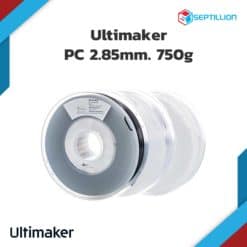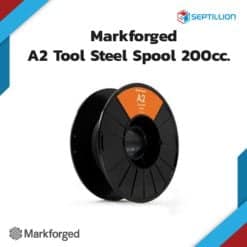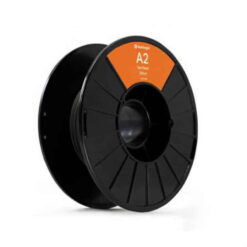3DXTECH CARBONX HTN+CF [HIGH TEMP CF NYLON] 500 g.
- Home
- Shop
- Filaments, Nylon Filaments
- 3DXTECH CARBONX HTN+CF [HIGH TEMP CF NYLON] 500 g.
![HTN+CF 500 g. CARBONX HTN+CF [HIGH TEMP CF NYLON]](https://septillion.co.th/wp-content/uploads/HTNCF-500-g..png)
![CARBONX HTN+CF [HIGH TEMP CF NYLON]](https://septillion.co.th/wp-content/uploads/CARBONX-HTNCF-on-web-white-bg.png)
![CARBONX HTN+CF [HIGH TEMP CF NYLON]](https://septillion.co.th/wp-content/uploads/HTNCF-500-g.-247x247.png)
![CARBONX HTN+CF [HIGH TEMP CF NYLON]](https://septillion.co.th/wp-content/uploads/CARBONX-HTNCF-on-web-white-bg-247x247.png)
3DXTECH CARBONX HTN+CF [HIGH TEMP CF NYLON] 500 g.
฿3,638.00 Inc. VAT
CarbonX™ HTN+CF is made using a semi-aromatic High Temperature Nylon [HTN] and a specialty carbon fiber ideally suited to high-temp polyamides. HTN+CF is a go-to for demanding applications that require excellent thermal, mechanical, and chemical resistance – along with ease of printing.
- Description
- Additional information
Description
3DXTECH CARBONX HTN+CF – High-strength
heat-resistant carbon fiber nylon
CarbonX™ PA12+CF Printing Filament
CarbonX™ Carbon Fiber PA12 is made using high-modulus carbon fiber and a specialty Nylon 12 (PA12) that we chose for it’s printability, thermal properties, and chemical resistance. PA12+CF is widely used in a variety of industries due to its excellent chemical resistance, low moisture absorption, and wide processing window. Our formulation ensures very low shrinkage in the printed part resulting in excellent dimensional stability, making our PA12+CF an excellent choice for tools, fixtures, and jigs.

Extruder Temp
265-285°C

Bed Temp
90-110°C

Heated Chamber
Recommended

Nozzle Specs
0.4mm diameter minimumHardened Steel Nozzle

Bed Adhesion
Magigoo Bed Prep

Layer Height
0.25mm or higher

Drying Specs
90°C for 4 hours

Supports
Water Soluble SupportsCARBON FIBER
Benefits of PA12+CF Includes:
High thermal properties, with a CUT of 120°C and HDT of 150°C
Excellent strength and stiffness over a wide temperature range, up to 150°C
Very low moisture absorption yielding improved retention of mechanical properties even when exposed to humid environments
Low density makes it ideal for light-weight parts
Superior chemical resistances, especially when compared to PA6 nylons
Low shrinkage and warping for high dimensional stability and reproducible part-to-part measurements
Filament Specifications:
1.75mm and 2.85mm +/- 0.05mm in diameter
Recommended Print Settings:
Extruder: 265-285°C
Bed Temp: 90-110°C
Nozzle: We currently recommend a hardened steel nozzle with a minimum diameter of 0.4mm
Other: Ideal layer height is 60% of nozzle diameter. We do not recommend printing layers smaller than 0.2mm with carbon fiber reinforced filaments
Bed Prep: Magigoo Bed Prep and 3DXTECH Polyimide Tape gives us the best results
Heated Chamber: Recommended
Supports: AquaTek™ water soluble X1 USM Universal Support Material is designed to work with complex models
Drying Instructions: 90°C for 4 hours




What Is It?
Fibers 5-10 micrometers wide made of carbon. The fibers are aligned following the axis of the material.
This, along with their physical makeup, are what give this material its excellent properties.
What Does It Do?
Carbon Fibers demonstrate a lot of desirable material properties:
- High stiffness
- High tensile strength
- High heat tolerance
- High chemical resistance
- Low weight
- Low thermal expansion
How Does It Work?
Reinforcing plastic with carbon fibers produces a 3D printing filament which exhibits the best properties of both the carbon fibers and the plastic of choice.
What Is It Good For?
Ideal for any applications which require light weight and rigidity.
Carbon fiber reinforced parts, designed to use less material and save weight, is extremely popular in aerospace, civil engineering, the military, and motorsports.
Abrasive Material
This material is particularly abrasive among 3D printing filaments. Users may find standard brass nozzles are chewed through very quickly compared to standard wear and tear. When worn through, the nozzle diameter will widen inconsistently and the printer will experience extrusion issues.

Because of this, it’s strongly recommended this material be printed through a hardened steel nozzle rather than a softer metal. Hardened steel nozzles can often be inexpensive and easily installed depending on your printer manufacturer’s instructions.
Additional information
| Colors | |
|---|---|
| Diameter | 1.75 mm., 2.85 mm. |


![CARBONX PA12+CF [CARBON FIBER NYLON]](https://septillion.co.th/wp-content/uploads/CarbonX-PA12CF-on-web-cover-247x247.webp)











